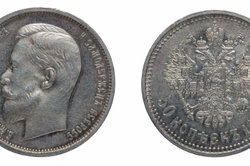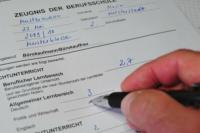There are two numbers when tossing a coin
The calculation of probability is possibly one of the more difficult to understand peculiarities of mathematics for beginners. However, the calculation is relatively simple, as can be shown well with the example of the coin toss and the chance that the number side comes twice in a row.

The principles of probability in a coin toss
- Basically, the probability that the chance of the same effects occurring is 1 divided by the number of effects.
- In a sack with five different marbles each, there is a 0.2 chance, which corresponds to 20%, of pulling a certain marble.
- In the case of a coin toss and the calculation of whether heads or tails are coming, the two sides of the coin are based on two effects.
- The theoretically probable possibility that the coin lands on the edge during a free throw and actually comes to rest there should be excluded here.
- Accordingly, the probability that one of the two sides will come out of a throw is 1: 2 = 0.5, hence exactly 50%.
- The probabilities for further throws remain the same for the time being. However, it is usually important to know what the chance of getting twice the same throw at e.g. B. is exactly two throws or a certain number of throws.
Binomial distribution: log - helpful
The binomial distribution is an important type of probability distribution. Ever ...
The chance of two numbers coming up
- For example, if you want to know what the odds are of getting the same side of a coin twice, the odds change. Because here not only one litter with 2 possible outcomes is taken as a basis, but 2 litters with thus 4 outcomes.
- This value increases exponentially. This means that you multiply the possible effects with the number of attempts. 2 effects raised to the power of 2 attempts results in the value 4.
- If a coin is tossed, it can happen that 2 x heads, 2 x tails, heads-tails and tails-heads are thrown. The chance that the same side will be thrown twice is therefore 1: 2 = 0.5, since two heads and two tails count here.
- For a special side, such as that of the number, the chance would be 1: 4 = 0.25.
- Incidentally, when you toss a coin, you can also use the faculty option on your pocket calculator to carry out the respective calculations, which makes the work steps much easier.
How helpful do you find this article?



